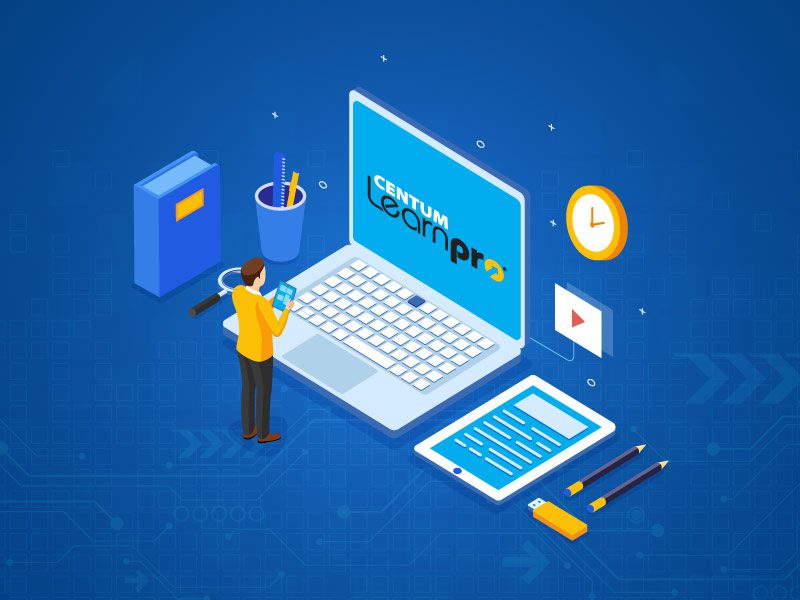What Is LMS & How Does It Work?
The best way to understand learning management systems is to consider their implementation and utilization. Some systems are big and complicated, while others are simple installations that only a few employees can access for internal training.
Let’s use the example of a business that wants to offer sales force training materials. A company can use the course builder feature within LMS to create slides, flashcards, documentation, quizzes, and certifications to prepare the team for an upcoming marketing strategy. Users can check the material when the course is ready by logging into their personal LMS accounts.
The employee can take the related tests or quizzes after finishing the training. If they pass those tests, they will receive a certification attesting to their thorough training and possession of the necessary product expertise.
The LMS records every participant who finishes the course. Administrators of the platform can examine that information to check who has completed the course and who might need more assistance or training.
Large corporations and professional organizations widely used LMS platforms to assist their education and training programs. During the pandemic, several institutions began using learning management systems more frequently.
Essential Components of LMS Software
Finding two learning management systems with the same feature sets among the hundreds available on the market would be challenging. However, there are a few essential components that every LMS must have:
-
Multichannel Access: Participants should be able to access their accounts and course materials on PCs, tablets, or cell phones. A browser-based LMS would be preferable to one that needs an app.
-
Course Management, Creation, or Importing: The readiness to import course content from other platforms or create courses using a built-in course builder should be available to administrators. Additionally, administrators should be able to convert existing text or slide files into ready content.
-
Tracking and Reporting: Administrators and trainees should be able to check records thanks to the availability of detailed reports. Administrators should be able to produce thorough reports on the general performance of learners. Users can track their personal development and determine how close they are to finishing the program.
Following are some scenarios where utilizing a learning management system is a wise choice:
-
Onboarding
You can automate employee onboarding with LMS. All newcomers must be offered the same training program to be prepared once.
-
Compliance Training
You can keep your employees informed about compliance requirements using LMS. It’s simple to update the training program using a learning platform; you can quickly add new compliance criteria to your online course.
-
Product Knowledge Training
LMS software can demonstrate your company’s products or services to salespeople and professionals. The solution enables you to give just-in-time product training immediately following the release of new products.
-
Sales Training
Using a learning management system, you can instruct sales representatives in various offices and locations on selling more effectively. You may improve their sales and communication skills by using dialogue simulations and LMS courses while testing their online understanding.
-
Channel Partner Training
You can offer the same course to thousands of partners worldwide using LMS. Your channel partners may be readily instructed on promoting, marketing, selling, and promoting your products.
-
Knowledge base
The learning materials are all kept in a specific place, and employees can readily access the information they require upon request, even if they don’t enroll in a course. This is realistic for businesses that need to train salespeople on a range of products.
Wrapping Up
To keep up with the rapid changes in the business and customer environments, corporate learning is increasing. Modern success requires new strategies, cutting-edge technology, and an innovative engagement concept.
By integrating the four training delivery methods of self-paced training, classroom training, live virtual training, and MOOCs, Centum’s smart Learning eXperience Platform (LXP Platform) – Centum LearnPro®, which draws on 15+ years of international L&D expertise, empowers you to develop, deliver, and track training for your employees, clients, and partners. These can be given via a user-friendly interface across various devices in both online and offline modes. It enables quick course building, testing, automatic certification, gamification, a user-level learning path, and training analytics that help enhance efficacy.


